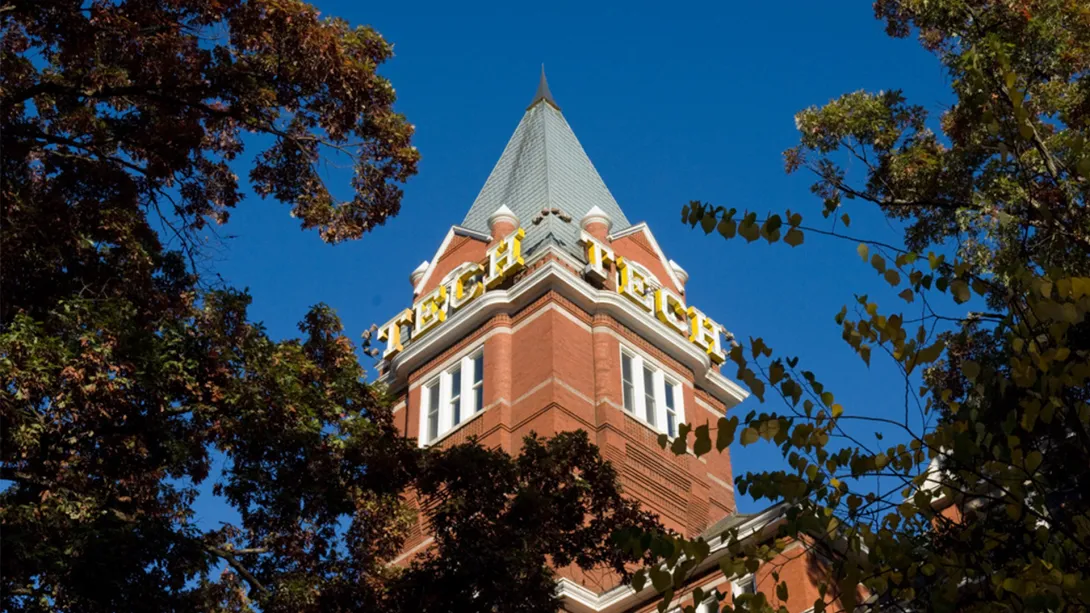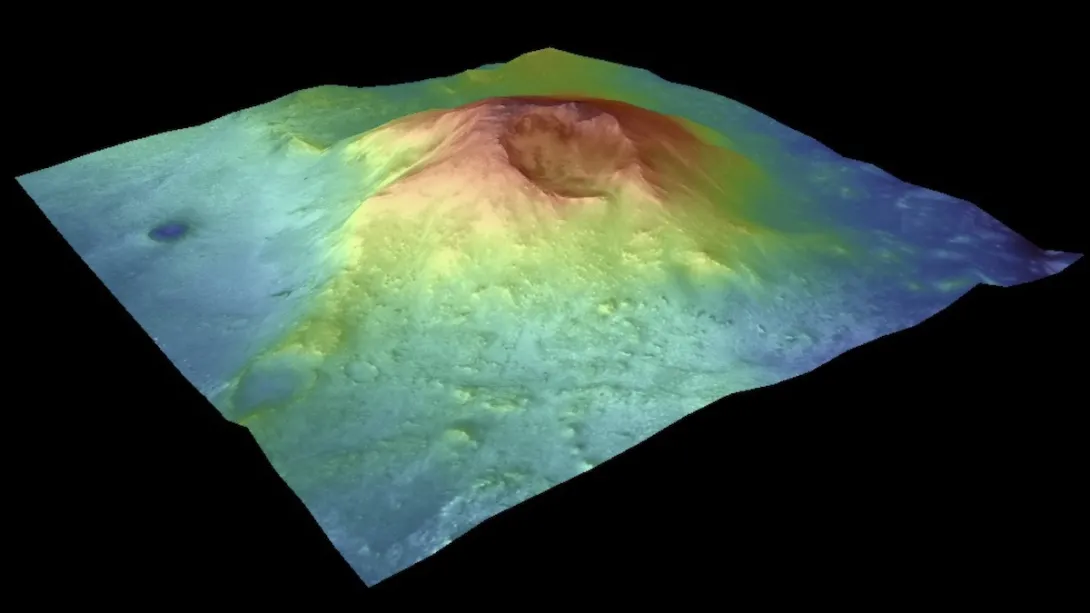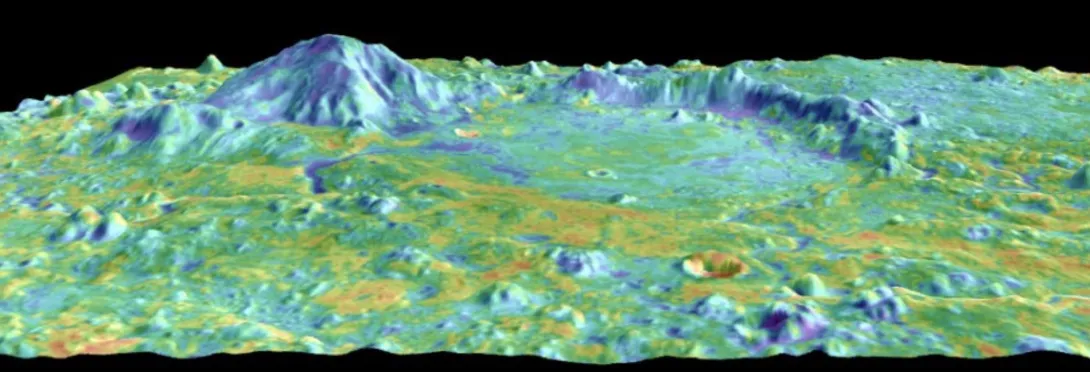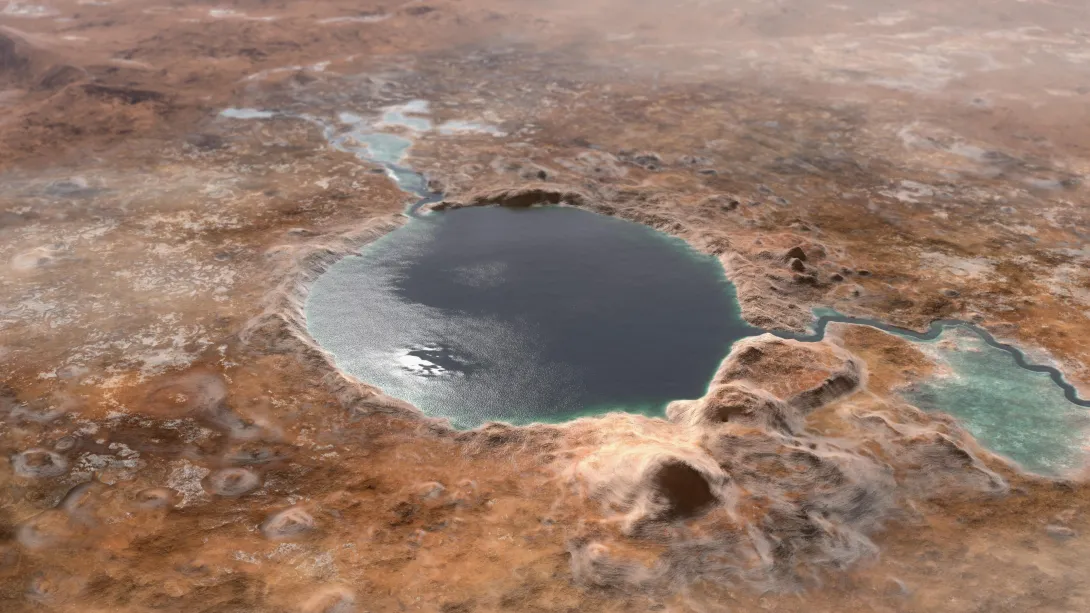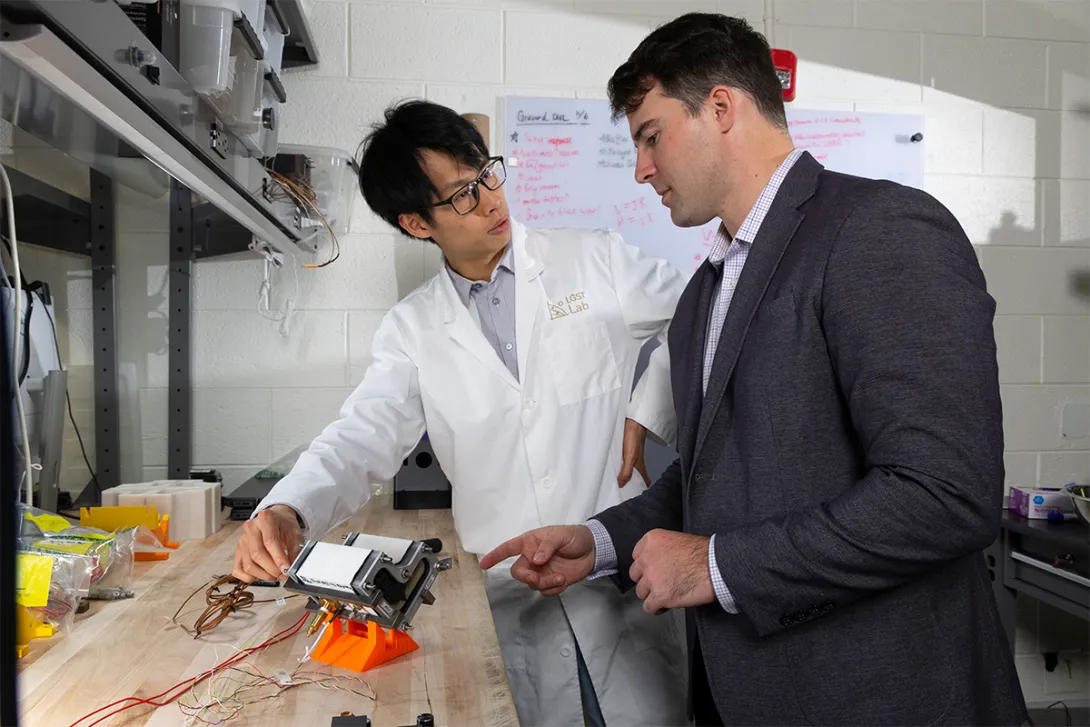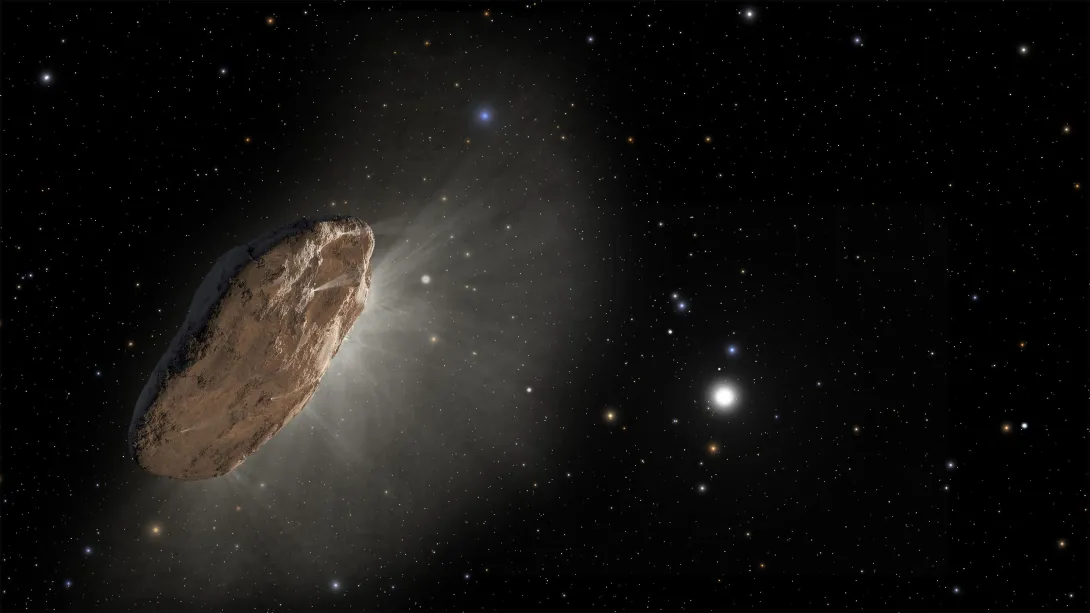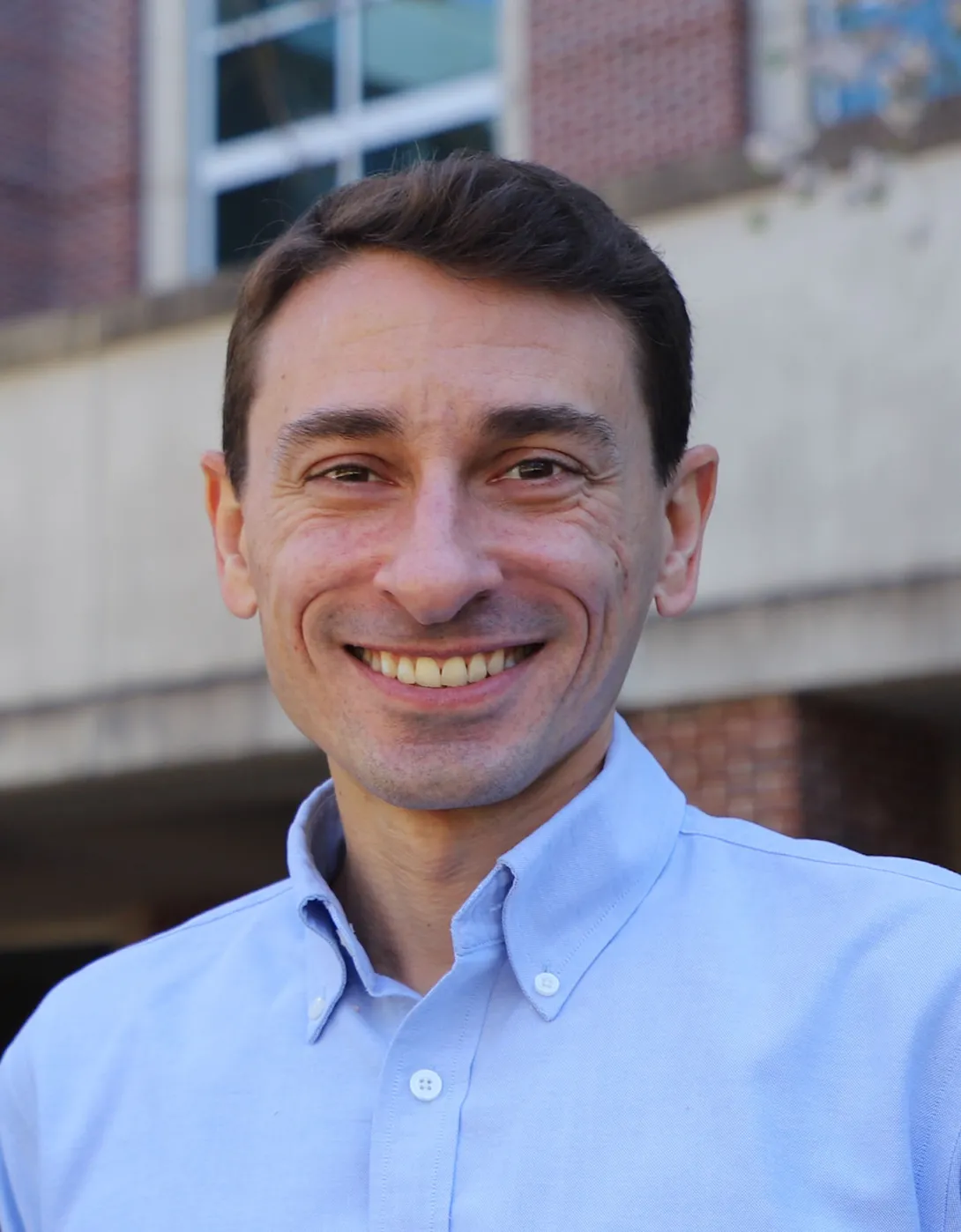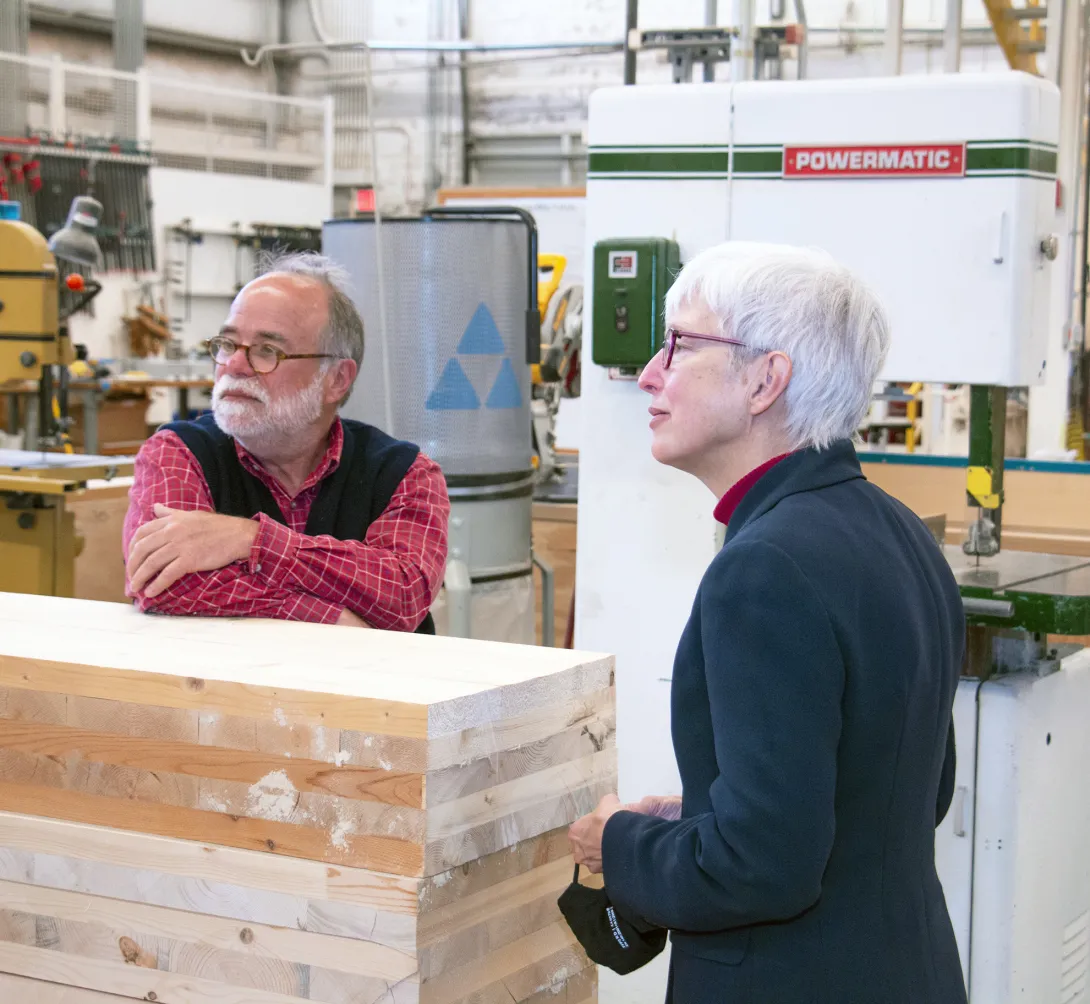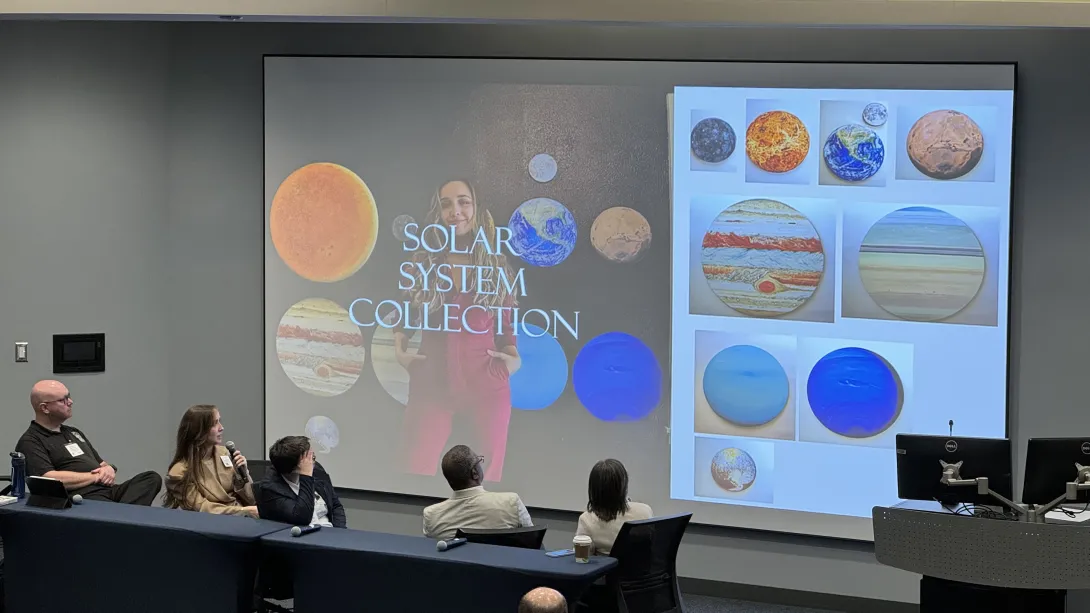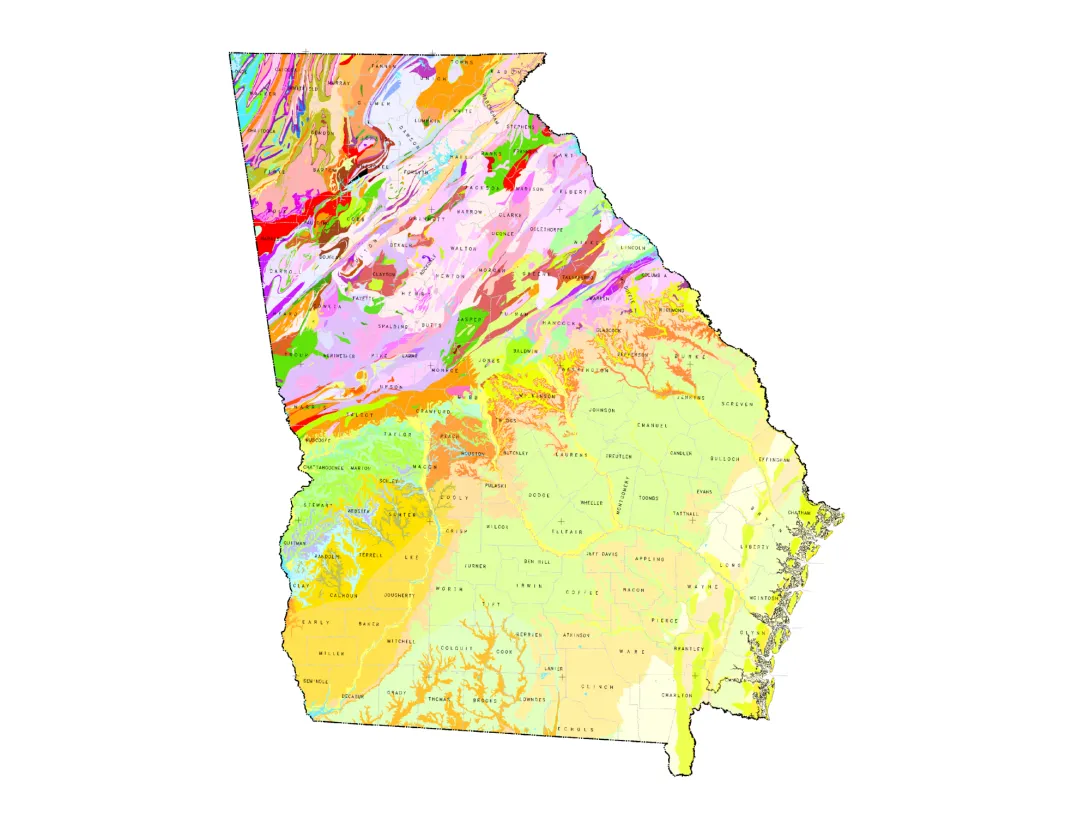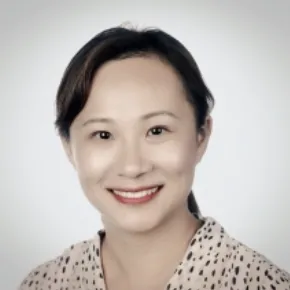Jul. 01, 2025
Georgia Tech has launched two new Interdisciplinary Research Institutes (IRIs): The Institute for Neuroscience, Neurotechnology, and Society (INNS) and the Space Research Institute (SRI).
The new institutes focus on expanding breakthroughs in neuroscience and space, two areas where research and federal funding are anticipated to remain strong. Both fields are poised to influence research in everything from healthcare and ethics to exploration and innovation. This expansion of Georgia Tech’s research enterprise represents the Institute’s commitment to research that will shape the future.
“At Georgia Tech, innovation flourishes where disciplines converge. With the launch of the Space Research Institute and the Institute for Neuroscience, Neurotechnology, and Society, we’re uniting experts across fields to take on some of humanity’s most profound questions. Even as we are tightening our belts in anticipation of potential federal R&D budget actions, we also are investing in areas where non-federal funding sources will grow and where big impacts are possible,” said Executive Vice President for Research Tim Lieuwen. "These institutes are about advancing knowledge — and using it to improve lives, inspire future generations, and help shape a better future for us all.”
Both INNS and SRI grew out of faculty-led initiatives shaped by a strategic planning process and campus-wide collaboration. Their evolution into formal institutes underscores the strength and momentum of Georgia Tech’s interdisciplinary research enterprise.
Georgia Tech’s 11 IRIs support collaboration between researchers and students across the Institute’s seven colleges, the Georgia Tech Research Institute (GTRI), national laboratories, and corporate entities to tackle critical topics of strategic significance for the Institute as well as for local, state, national, and international communities.
"IRIs bring together Georgia Tech researchers making them more competitive and successful in solving research challenges, especially across disciplinary boundaries,” said Julia Kubanek, vice president of interdisciplinary research. “We're making these new investments in neuro- and space-related fields to publicly showcase impactful discoveries and developments led by Georgia Tech faculty, attract new partners and collaborators, and pursue alternative funding strategies at a time of federal funding uncertainty."
The Space Research Institute
The Space Research Institute will connect faculty, students, and staff who share a passion for space exploration and discovery. They will investigate a wide variety of space-related topics, exploring how space influences and intersects with the human experience. The SRI fosters a collaborative community including scientific, engineering, cultural, and commercial research that pursues broadly integrated, innovative projects.
SRI is the hub for all things space-related at Georgia Tech. It connects the Institute’s schools, colleges, research institutes, and labs to lead conversations about space in the state of Georgia and the world. Working in partnership with academics, business partners, philanthropists, students, and governments, Georgia Tech is committed to staying at the forefront of space-related innovation.
The SRI will build upon the collaborative work of the Space Research Initiative, the first step in formalizing Georgia Tech’s broad interdisciplinary space research community. The Initiative brought together researchers from across campus and was guided by input from Georgia Tech stakeholders and external partners. It was led by an executive committee including Glenn Lightsey, John W. Young Chair Professor in the Daniel Guggenheim School of Aerospace Engineering; Mariel Borowitz, associate professor in the Sam Nunn School of International Affairs; and Jennifer Glass, associate professor in the School of Earth and Atmospheric Sciences. Beginning July 1, W. Jud Ready, a principal research engineer in GTRI’s Electro-Optical Systems Laboratory, will serve as the inaugural executive director of the Space Research Institute.
To receive the latest updates on space research and innovation at Georgia Tech, join the SRI mailing list.
The Institute for Neuroscience, Neurotechnology, and Society
The Institute for Neuroscience, Neurotechnology, and Society (INNS) is dedicated to advancing neuroscience and neurotechnology to improve society through discovery, innovation, and engagement. INNS brings together researchers from neuroscience, engineering, computing, ethics, public policy, and the humanities to explore the brain and nervous system while addressing the societal and ethical dimensions of neuro-related research.
INNS builds on a foundation established over a decade ago, which first led to the GT-Neuro Initiative and later evolved into the Neuro Next Initiative. Over the past two years, this effort has culminated in the development of a comprehensive plan for an IRI, guided by an executive committee composed of faculty and staff from across Georgia Tech. The committee included Simon Sponberg, Dunn Family Associate Professor in the School of Physics and the School of Biological Sciences; Christopher Rozell, Julian T. Hightower Chaired Professor in the School of Electrical and Computer Engineering; Jennifer Singh, associate professor in the School of History and Sociology; and Sarah Peterson, Neuro Next Initiative program manager. Their leadership shaped the vision for a research community both scientifically ambitious and socially responsive.
INNS will serve as a dynamic hub for interdisciplinary collaboration across the full spectrum of brain-related research — from biological foundations to behavior and cognition, and from fundamental research to medical innovations that advance human flourishing. Research areas will encompass the foundations of human intelligence and movement, bio-inspired design and neurotechnology development, and the ethical dimensions of a neuro-connected future.
By integrating technical innovation with human-centered inquiry, INNS is committed to ensuring that advances in neuroscience and neurotechnology are developed and applied ethically and responsibly. Through fostering innovation, cultivating interdisciplinary expertise, and engaging with the public, the institute seeks to shape a future where advancements in neuroscience and neurotechnology serve the greater good. INNS also aims to deepen Georgia Tech’s collaborations with clinical, academic, and industry partners, creating new pathways for translational research and real-world impact.
An internal search for INNS’s inaugural executive director is in the final stages, with an announcement expected soon.
Join our mailing list to receive the latest updates on everything neuro at Georgia Tech.
News Contact
Laurie Haigh
Research Communications
Jun. 05, 2025
Georgia Tech scientists have uncovered evidence that a mountain on the rim of Jezero Crater — where NASA’s Perseverance Rover is currently collecting samples for possible return to Earth — is likely a volcano. Called Jezero Mons, it is nearly half the size of the crater itself and could add critical clues to the habitability and volcanism of Mars, transforming how we understand Mars’ geologic history.
The study, “Evidence for a composite volcano on the rim of Jezero crater on Mars,” was published this May in the Nature-family journal Communications Earth & Environment, and underscores how much we have left to learn about one of the most well-studied regions of Mars.
Lead author Sara C. Cuevas-Quiñones completed the research as an undergraduate during a summer program at Georgia Tech; she is now a graduate student at Brown University. The team also included corresponding author Professor James J. Wray (School of Earth and Atmospheric Sciences), Assistant Professor Frances Rivera-Hernández (School of Earth and Atmospheric Sciences), and Jacob Adler, then a postdoctoral fellow at Georgia Tech and now an assistant research professor at Arizona State University.
“Volcanism on Mars is intriguing for a number of reasons — from the implications it has on habitability, to better constraining the geologic history,” Wray says. “Jezero Crater is one of the best studied sites on Mars. If we are just now identifying a volcano here, imagine how many more could be on Mars. Volcanoes may be even more widespread across Mars than we thought.”
A mountain in the margins
Wray first noticed the mountain in 2007, while considering Jezero Crater as a graduate student.
“I was looking at low-resolution photos of the area and noticed a mountain on the crater’s rim,” he recalls. “To me, it looked like a volcano, but it was difficult to get additional images.” At the time, Jezero Crater was newly discovered, and imaging focused almost entirely on its intriguing water history, which is on the opposite side of the 28-mile-wide crater.
Then, Jezero Crater, due to these lake-like sedimentary deposits, was selected as the landing spot for the 2020 Perseverance Rover — an ongoing NASA mission seeking signs of ancient Martian life and collecting rock samples for possible return to Earth.
However, after landing, some of the first rocks Perseverance encountered were not the sedimentary deposits one might expect from a previously-flooded area — they were volcanic. Wray suspected he might know the origin of these rocks, but to make a case for it, he would need to show that the mountain on the edge of Jezero Crater could indeed be a volcano.
A new researcher — and old data
The opportunity presented itself several months after Perseverance landed when Cuevas-Quiñones applied to a Summer Research Experience for Undergraduates (REU) program hosted by the School of Earth and Atmospheric Sciences to work with Wray.
“A previous study led by Briony Horgan (professor of planetary science at Purdue University) had also suggested that Jezero Mons could be volcanic,” Cuevas-Quiñones says. “I began wondering if there was a way to home in on these suspicions.”
The team partnered with study coauthor Rivera-Hernández, who specializes in characterizing the surface of planets and their habitability. They decided to use datasets gathered from spacecraft orbiting Mars to compare the properties of Jezero Mons to other, known, volcanoes. “We can’t visit Mars and definitively prove that Jezero Mons is a volcano, but we can show that it shares the same properties with existing volcanoes — both here on Earth and Mars,” Wray explains.
“We used data from the Mars Odyssey Orbiter, Mars Reconnaissance Orbiter, ExoMars Trace Gas Orbiter, and Perseverance Rover, all in combination to puzzle this out,” he adds. “I think this shows that these older spacecraft can be extremely valuable long after their initial missions end — these old spacecraft can still make important discoveries and help us answer tricky questions.”
For Cuevas-Quiñones, it also underscores the importance of REU programs and opportunities for undergraduates. “I was an undergraduate student at the time, and this was my first time conducting research,” she says. “It was fascinating to learn how different data sets could be used to decode the origin of a landscape. After Jezero Mons, it became clear to me that I would continue to study Mars and other planetary bodies.”
The search for life — and determining Mars’ age
The discovery makes the crater even more intriguing in the search for past life on Mars. A volcano so close to watery Jezero Crater could add a critical source of heat on an otherwise cold planet, including the potential for hydrothermal activity — energy that life could use to thrive.
This type of system also holds interest for Mars as a whole. “The coalescence of these two types of systems makes Jezero more interesting than ever,” shares Wray. “We have samples of incredible sedimentary rocks that could be from a habitable region alongside igneous rocks with important scientific value.” If returned to Earth, igneous rocks can be radioisotope dated to know their age very precisely. Dating the Jezero Crater samples could be used to calibrate age estimates, providing an unprecedented window into the geologic history of the planet.
The take home message? “Mars is the best place we have to look in our solar system for signs of life, and thanks to the Perseverance Rover collecting samples in Jezero, the United States has samples from the best rocks in the best place on Mars,” Wray says. “If these samples are returned to Earth, we can do incredible, groundbreaking science with them.”
DOI: https://doi.org/10.1038/s43247-025-02329-7
Funding: Cuevas-Quiñones was supported by Georgia Tech’s 2021 Research Experience for Undergraduates program sponsored by NSF and 3M corporation. Wray was supported by NASA funding for Co-Investigators on HiRISE and CaSSIS. CaSSIS is a project of the University of Bern and funded through the Swiss Space Office via ESA’s PRODEX program. The instrument hardware development was also supported by the Italian Space Agency (ASI) (ASI-INAF agreement 2020-17-HH.0), INAF/Astronomical Observatory of Padova, and the Space Research Center (CBK) in Warsaw. Support from SGF (Budapest), the University of Arizona Lunar and Planetary Lab, and NASA are also gratefully acknowledged. Operation support from the UK Space Agency is also acknowledged.
News Contact
Written by Selena Langner
May. 16, 2025
As Rocket Lab prepares to launch a mission to Venus next year, a multidisciplinary research team led by Georgia Tech braved an erupting volcano recently to test an instrument custom-built to explore Venus’ clouds and look for signs of organic chemistry. If successful, the 2026 launch will mark the first private spacecraft to reach Venus, and the first U.S. mission to study its sulfuric acid-filled clouds in nearly 40 years.
The instrument, the autofluorescence nephelometer (AFN) built by Droplet Measurement Technologies, will fire a laser beam out a window and use light scattering from individual particles to measure the size and composition of the planet’s aerosols, the tiny particles that make up the clouds. The AFN will only have about five minutes to collect data as the small probe falls through the clouds, and another 15 minutes to send data back to Earth before things get too extreme. The probe is not expected to reach the surface, where it is hot enough to melt lead, and the pressure is 90 times that of Earth’s surface.
Georgia Tech oversees all of the instrument’s field tests and modeling. The project, called VENUSIAN, is led by Christopher E. Carr, assistant professor in the Daniel Guggenheim School of Aerospace Engineering, with funding from NASA’s PSTAR program. Carr holds a joint appointment in the School of Earth and Atmospheric Sciences.
NASA also built a heat shield for Rocket Lab’s spacecraft and will provide navigation and communications support through the Deep Space Network.
“Is there life in the clouds of Venus? I don’t think so, but if it’s there, I want to find it,” says Carr, who admits that the more he studies Venus, the more interesting it becomes.
Collecting Volcanic Molecules
In March, his team tested the AFN in the field, flying it on a drone through Hawaii’s volcanic fog, a haze that forms because of volcanic emissions. The droplets are rich with sulfuric acid, similar to Venus’ atmosphere.
“We got some valuable data,” says Carr. “This was the first time for our whole team from different institutions to be together in one place.”
Collaborators from the Massachusetts Institute of Technology (MIT), the University of Colorado-Boulder, which managed and flew the drones, and Droplet Measurement Technologies joined the Georgia Tech contingent in Hawaii.
Sara Seager, professor of physics, professor of aeronautics and astronautics, and Class of 1941 Professor of Planetary Science at MIT, who serves as the science principal investigator for the Rocket Lab mission, emphasized the critical testing role Georgia Tech is playing ahead of the mission to Venus.
“Building the instrument is important, but what is also important is knowing how you’re going to interpret data when you get back. To understand that you need to use the instrument over and over again here on Earth. Professor Carr taking a lead on that from a science perspective is important,” says Seager, who will oversee two subsequent Morning Star Missions to Venus that the team envisions will culminate in an atmosphere sample return.
The Kilauea volcano, located in Hawaii Volcanoes National Park on the Big Island, began erupting as soon as the team started their first drone flight. The eruption grew more intense on the second day, giving the researchers a chance to run the AFN through its paces. While the flight test results are still preliminary, the team indicated that the instrument did detect volcanic ash and volcanic smog, which bodes well for the Venus mission.
“It was cool to see our instrument in action,” says Snigdha Nellutla, a research engineer and data modeler, who recently finished her master’s in aerospace engineering. She simulates the AFN’s output in different environmental conditions, both during the Hawaii field tests and on the actual mission to Venus.
In Search of a Carbon Cycle
“We’re seeking evidence of a carbon cycle in the Venus atmosphere,” she said. “Life as we know it on Earth is carbon-based. Carbon compounds are delivered to Venus from meteorites. Are they rapidly degraded or do they persist in some form?”
Billions of years ago, Venus may have had as much water as Earth — but at some point in its evolution, carbon dioxide in the planet's atmosphere triggered an intense runaway greenhouse effect. This sent temperatures soaring, causing the planet's water to evaporate, and the hydrogen part of the water (H2O) was lost to space.
In 2020, astronomers detected phosphine in Venus’ atmosphere. This gas, often associated with biological activity on Earth, could signal signs of life. While the presence of phosphine is now debated, a rash of recent discoveries suggests that organic chemistry in the clouds could be much more complex than previously considered.
While Venus’ extreme surface temperatures are well documented, the one exception is found in the middle cloud layers, which have habitable temperatures. By looking at individual particles within the Venus atmosphere, researchers hope to learn about other compounds that could exist, including organic molecules that could influence a carbon cycle. The Hawaii measurements will serve as an important baseline to compare against what will be gathered on Venus.
The Smoking Gun of Organics
The mission to Venus will also measure fluorescence, considered “a smoking gun” for possible organic materials, says Carr.
On Venus’ super-rotating atmosphere, clouds take four Earth days to travel around the planet, while the planet spins in the same direction approximately 50 times slower.
“The differences with Venus’s atmosphere compared with Earth have forced our whole team to look at how we approach astrobiology completely differently,” he explains. “When we think of finding signs of life, we follow the water, but Venus has no water; it’s sulfuric acid.”
To Carr, the importance of the mission is to better understand Venus’ chemistry, given that sulfuric acid and water have different properties, which can contribute to or limit the kind of chemistry that can occur.
“By understanding what might be possible, we can learn if different types of life might be possible. It also helps us know what to look for when we look for life,” he says. Even if there is no life in the clouds of Venus, there is likely to be interesting chemistry, based on extensive testing by members of the science team. This chemistry could be detected by the AFN as fluorescent aerosol particles.
VENUSIAN has enabled Georgia Tech aerospace engineering students to get a rare opportunity to test and model hardware that will fly in space.
Students Celebrate Teamwork, Space Aspirations
“As a first-year, I’ve had a variety of tasks, and that’s been fun for me as someone who is just starting to explore my career possibilities,” says Violet Oliver, who oversees the ground sampling tests. “This has been a really good introduction — getting my feet wet in what future space missions might look like and, more broadly, what the engineering test cycle looks like.”
“The biggest thing we learned was how to work together as a team,” adds Cassius Tunis, a senior in aerospace engineering. He managed the logistics, designed hardware to integrate the AFN and the drone, and served as the field study’s test engineer during the flights, where he communicated with the pilots and tracked their flight pattern.
“It’s been a goal of mine to work in the space industry since high school,” he said, crediting VENUSIAN with helping him pinpoint his career direction. “I see myself as the resident test engineer. Test engineering is a very operational, multidisciplinary field within aerospace. You get to wear a lot of different hats and interact with people of all different backgrounds.”
Carr indicated that the team will return to Hawaii later this year for final AFN field testing before the Venus mission.
Looking to the 2026 launch, Seager says, “I’m looking forward to a safe launch and getting exciting data back. It’s Venus’ moment to shine,” she added, calling Venus the “quiet, overlooked gem” to Mars and Earth.
Carr expressed admiration for Rocket Lab’s founder and CEO, Peter Beck, whose passion for the Venus mission is well documented.
“He exudes the true curiosity of a scientist and explorer. In Rocket Lab, we have a partner that is excited by discovery.”
May. 01, 2025
Early on, Georgia Tech graduate students William Trenton Gantt and Hugh (Ka Yui) Chen imagined working in the space industry.
“When I was 14, I dreamed about being in space one day,” recalls Chen, 22, a native of Hong Kong and a Ph.D. student in aerospace engineering. “I think the industry has been making space more accessible to everyone. Commercialization is a big part of enabling this.”
Gantt, an engineer and former U.S. Army veteran graduating with an MBA from the Scheller College of Business this spring, remembered seeing the space shuttle retire and companies begin privatizing space as he entered young adulthood.
“I’ve always been interested in space, and a lot of it comes from the challenge of going to space,” he observes. “Seeing how hard it is to get to space and seeing it become achievable — that to me was the most attractive thing about it.”
For Gantt, the feeling always brings to mind John F. Kennedy’s famous line that spelled out America’s space ambitions: “We choose to go to the moon in this decade and do the other things, not because they are easy, but because they are hard.”
Recognizing Georgia Tech’s aerospace strengths, Gantt didn’t waste time building bridges within Scheller and in other parts of Georgia Tech. He founded the Scheller MBA Space Club, a first at the College, to track the industry as it grows and develops.
“I came from a military background, so I had my eye on the defense industry going into the MBA program. Georgia Tech, being the No. 2 aerospace engineering undergraduate school in the nation, I knew they already had strong industry connections. Making connections was a big goal coming into this program.”
Assessing Early-Stage Space Tech
He took part in the Entrepreneurship Assistants Program (EAP), which pairs a Scheller MBA student with a faculty or student inventor to evaluate early-stage technology for potential commercialization. He evaluated two space-related technologies, one with Chen’s support.
“The EAs conduct technology commercialization assessments and develop a business model canvas. By applying an entrepreneurial strategy compass, they predict potential go-to-market strategies for new technology,” says Paul Joseph, principal in the Office of Commercialization’s Quadrant-i unit, who created the EAP.
(See sidebar to read more about the EAP and the specific technologies assessed.)
Tapping Into a Nearly $2T Industry
According to McKinsey & Co., the space technology market, fueled by advancements in satellite technology, commercial space travel, and 5G networks, is projected to reach $1.8 trillion by 2035.
“We're seeing an industry shifting from a multibillion-dollar market cap to a multitrillion-dollar market cap in less than a decade. If you look at this from a business perspective, this is a massive addressable market for entrepreneurs," says Gantt.
From its Center for Space Technology and Research to the new Center for Space Policy and International Relations and labs like the Space Systems Design Lab, which focuses on areas such as CubeSat propulsion, lunar research, and hypersonic flight, Georgia Tech excels in space research across disciplines. In July, Georgia Tech will launch the Space Research Institute (SRI), one of its newest Interdisciplinary Research Institutes (IRI), to foster additional collaboration in this growing field.
“At Georgia Tech, there are competencies across every single College that will help to augment our understanding of space,” says Alex Oettl, professor of strategy and innovation in Scheller College, whose interest in the new space economy spans the last 20 years. “When you look at the technologies coming from Georgia Tech, they can impact this future trillion-dollar industry.”
An economist by training, Oettl led Georgia Tech’s involvement in the Creative Destruction Lab-Atlanta, a multi-university program that helped commercialize early-stage scientific technologies.
Leveraging Affordable Launch
The emergence of affordable launch, spurred by SpaceX’s introduction of the Falcon 9 rocket using reusable rocket technology, has made space much more accessible, from biomedical companies to academic institutions.
“Because there has been a drop in the cost of accessing space, it allows experimentation to flourish,” says Oettl.
He recalls Mark Costello, former chair of the Daniel Guggenheim School of Aerospace Engineering, explaining how he could launch a CubeSat into Low Earth Orbit out of his research budget, whereas before it would have been cost-prohibitive.
Today, Georgia Tech students and researchers are poised to capitalize on the new space economy stack — from new launch capabilities to new development in propellants and in-space operations and maintenance to more powerful sensors on Earth-observation satellites.
“I’ve seen firsthand the traction occurring on the commercial side. There are a lot of social scientists waking up to the opportunity that exists and thinking about business dynamics that will emerge as a result of this great opportunity,” he says.
Georgia Tech, an interdisciplinary, tech-focused university, brings significant capabilities across its Colleges to drive new and emerging technologies that have implications for space.
“Space hits on all the strengths that exist at the various Colleges,” Oettl explains. “Faculty at Georgia Tech are pushing the boundary and showing our students innovations that will emerge in the space economy that are not immediately obvious — such as in adjacent industries.”
Oettl calls these first-order and spillover impacts of new technology. By first-order impacts, he means businesses can take advantage of these opportunities and create new products on top of the original innovation. By spillovers, he cites as an example an Earth-observation satellite enabling other industries to take advantage of data from the ground. For instance, insurance companies are one of the largest users of space technology by way of satellite imagery.
Bringing Capabilities Together Through New Space IRI
The SRI will bring together the best in engineering, computer science, policy, and business research across Georgia Tech. Along the way, it could help engineers and computer scientists think with a more business-minded approach to pitch their innovations to the commercial space sector.
“You don’t see a lot of engineers having that inherent ability,” notes Gantt. “The Space IRI can shine by fostering collaboration between business students and engineers, enabling them to develop innovative go-to-market strategies and clearly define the unique value propositions these technologies offer to end users. You can bring these people together and create some forward momentum in the space industry.”
Nov. 19, 2024
In 2017, a long, oddly shaped asteroid passed by Earth. Called ‘Oumuamua, it was the first known interstellar object to visit our solar system, but it wasn’t an isolated incident — less than two years later, in 2019, a second interstellar object (ISO) was discovered.
“‘Oumuamua was found passing just 15 million miles from Earth — that’s much closer than Mars or Venus,” says James Wray. “But it was formed in an entirely different solar system. Studying these objects could give us incredible insight into extrasolar planets, and how our planet fits into the universe.”
Wray, a professor in the School of Earth and Atmospheric Sciences at Georgia Tech, has just been awarded a Simons Foundation Pivot Fellowship to do just that. Pivot Fellowships are among the most prestigious sources of funding for cutting-edge research, and support leading researchers who have the deep interest, curiosity and drive to make contributions to a new discipline.
Wray has primarily studied the geoscience of Mars. He will leverage knowledge of nearby planets to understand ISOs and planets much farther away. “I want to understand how planets got to be the way they are, and if they could have ever hosted life,” he explains. “Extrasolar planets give us many more places to ask those questions than our solar system does, but they're too distant to visit with spacecraft. ISOs provide a unique opportunity to explore other solar systems without leaving our own.”
The Fellowship will provide salary support as well as funding for research, travel, and professional development. “Seed funds like this are so valuable,” says Wray. “I’m incredibly grateful to the Simons Foundation. I’d also like to thank Georgia Tech for its support,” he adds, sharing that the Center for Space Technology and Research supported a related research effort at the University of Hawaii earlier this year. “My mentor and I were able to spend some of that time improving our Pivot Fellowship proposal, which played a critical role in securing this Fellowship.”
In search of ISOs
Wray will study small solar system bodies like asteroids and comets to decode the processes of planet formation and space weathering, and will analyze data from the 2017 and 2019 ISOs.
He will also work alongside collaborators including Karen Meech of the University of Hawaii, who led the paper characterizing ‘Oumuamua, to conceptualize what an intercept mission might look like.
“We still have a lot of questions regarding ISOs,” he says. “Hundreds of papers have already been written about them, but we still don't know the answers.” One key mystery is the composition of the bodies: both the 2017 and 2019 objects were compositionally different from those in our solar system.
“Are they inherently different from the bodies in our solar system, or did the long journey to our solar system make them that way? Is our solar system different from others?” Wray asks. “We could answer so many questions with even a simple picture of the next ISO that comes close enough for us to intercept with spacecraft.”
A cosmic timeline
While there is no guarantee that another ISO might be spotted in our solar system, the timing is opportune — upcoming telescope surveys are poised to detect such interstellar objects. “In mid-2025, when I will start this Fellowship, the new Rubin Observatory will begin scanning the entire sky,” Wray says. “It has the potential to discover up to several new ISOs per year.”
“ISO visits are always brief,” he adds, “so the research needs to be in place for when one is spotted.” If an interstellar object is detected, Wray and Meech will be poised to leverage specialized telescopes in Hawaii, along with others worldwide, to better understand it, studying its size, shape, and composition — and potentially sending spacecraft to image it.
“We might never find another ISO — or they might be the key to imminent breakthroughs in understanding our place in the galaxy,” Wray adds. “I'm extremely grateful to the Simons Foundation for the flexibility to pursue this research at whatever pace the cosmos allows.”
News Contact
Written by Selena Langner
Sep. 06, 2024
New research shows that an effort to improve wintertime air quality in Fairbanks, Alaska — particularly in frigid conditions around 40 below zero Fahrenheit — may not be as effective as intended.
Led by a team of University of Alaska Fairbanks and Georgia Tech researchers that includes School of Earth and Atmospheric Sciences Professor Rodney Weber, the researchers' latest findings are published in Science Advances.
In the study, the team leveraged state-of-the-art thermodynamic tools used in global air quality models, with an aim to better understand how reducing the amount of primary sulfate in the atmosphere might affect sub-zero air quality conditions.
The project stems from the 2022 Alaskan Layered Pollution and Chemical Analysis project, or ALPACA, an international project funded by the National Science Foundation, the National Oceanic and Atmospheric Administration and European sources. It is part of an international air quality effort called Pollution in the Arctic: Climate Environment and Societies.
Read the full story in the University of Alaska Fairbanks newsroom.
News Contact
Jess Hunt-Ralston
Director of Communications
College of Sciences
Georgia Institute of Technology
Rod Boyce
University of Alaska Fairbanks
Aug. 12, 2024
Interdisciplinary collaboration drives innovation at Georgia Tech. Researchers with joint appointments across the Institute's six colleges discuss how blending diverse fields helps them create more sustainable, technologically advanced, and socially viable solutions to some of our planet’s biggest problems. Learn more
Apr. 30, 2024
April 12 is a significant date in the history of exploration, as it marks the first space flight of a human, Yuri Gagarin, in 1961. This year on April 12, the Georgia Tech Space Research Initiative (Space RI) hosted an event highlighting the Institute’s interdisciplinary space research. The Yuri’s Day Symposium was Space RI’s first public event.
A multidisciplinary initiative, the Space RI brings together faculty, researchers, and students from across campus who share a passion for space exploration. Their combined research explores a broad array of space-related topics, all considered from a human perspective.
“Launching Georgia Tech’s Space Research Initiative reinforces our commitment to advancing our understanding of space and our universe,” said Executive Vice President for Research Chaouki Abdallah. “It is also a testament to Georgia Tech's unwavering dedication to pushing the limits of what is possible and to fostering innovations that benefit humankind.”
The symposium was organized by Glenn Lightsey, interim executive director of the Space RI, and the Space RI steering committee, which consists of representatives from the Georgia Tech Research Institute (GTRI) and the Colleges of Engineering, Computing, and Sciences, the Ivan Allen College of Liberal Arts, and the Scheller College of Business. The day began with remarks from Research leadership and an overview of the Space RI and its mission. “This is an exciting time for space exploration at Georgia Tech and across the world,” Lightsey said. “Space research is a critical part of solving our world’s most challenging problems and improving life for everyone on Earth.”
Space research and exploration yield many societal benefits that improve life on Earth and even foster economic growth. These advances include rapidly evolving technologies, improvements in medicine, and the development of enhanced materials — such as self-healing materials and those designed for extreme environments. Additionally, space research provides essential tools, data, and insights for climate scientists.
Sessions and panels throughout the day covered space science, space media, NASA’s Moon to Mars program, GTRI’s space research program, commercial space initiatives, and space in popular culture. A.C. Charania, NASA’s chief technologist and a Georgia Tech alumnus, delivered the keynote address. He shared insights into his work at NASA and Moon to Mars.
Following the symposium, the Space RI hosted a “star party” at the Georgia Tech Observatory. People of all ages gathered at the event, where they could use the observatory’s telescope to observe the moon, Jupiter, and the Orion Nebula, an immense cloud of dust and gas from which new stars are born.
“It was a clear night, and we were able to view the lunar terminator — the boundary where the sun is setting on the moon — which accentuates craters and mountains,” said Lightsey. “It was exciting to officially launch our initiative on a day when the world celebrated space exploration and the star party was a fantastic way to end our event.”
In July 2025, the Space RI will transition into one of Georgia Tech’s Interdisciplinary Research Institutes. Learn more about the initiative at space.gatech.edu.
Sign up to receive space news and event updates from the Space RI.
News Contact
Laurie Haigh
Research Communications
Feb. 09, 2024
A regional consortium led by the Georgia Institute of Technology, the University of Georgia, and Georgia State University, in collaboration with the Georgia Mining Association, will host an inaugural workshop on Georgia partnerships for Essential Minerals (GEMs).
The one-day workshop is planned for Thursday, Feb. 1, at the University of Georgia Hotel and Conference Center and is expected to be the first in a series of critical mineral conversations hosted in rotation by the partner institutions. The event will bring together 40 participants from academia, industry, and government to discuss the opportunities and challenges around critical mineral supplies in the state and in the nation.
The GEMs workshop is driven by the compelling needs around domestic critical mineral supply for the energy and transportation sectors, and by the potentially significant rare earth element resources available in the state of Georgia. The workshop will couple the research capabilities of the three Georgia R1 research universities and the mature mining industry in Georgia to solve the challenges around this issue.
It will engage all stakeholders with interests in resource exploration, technology development, energy and environmental sustainability, economic development, regulatory compliance, and workforce development toward achieving national security independence for critical mineral supply. The first workshop will focus on the production of the critical mineral resource, rare earth elements (REE), from kaolin mine tailings, overburden, and other potential processing streams. Other areas of REE production may also be considered.
The goal of the workshop is to produce a statement of outcomes regarding the current state of knowledge, opportunities, challenges, and possible pathways for GEMs. It will also serve as a catalyst to drive conversations among the key stakeholders to make an impact in GEMs, including developing university-industry-government partnership grants, internships, sponsored research, and training opportunities for the current and next generation of Georgia residents. These relationships will play an important role in creating reliable domestic supplies of critical minerals.
If you are interested in participating in the workshop, or have any other questions, please reach out to the Georgia Tech Strategic Energy Institute via email at comments@energy.gatech.edu or Professor Paul Schroeder at the University of Georgia by email at schroe@uga.edu.
News Contact
Priya Devarajan || Research Communications Program Manager, SEI
Aug. 31, 2023
Yuanzhi Tang has received a National Science Foundation grant to see if areas along the middle and coastal plains of Georgia that produce a highly sought-after clay are also home to large amounts of rare earth elements (REEs) needed for a wide range of industries, including rapidly evolving clean energy efforts.
Tang is an associate professor in the School of Earth and Atmospheric Sciences at Georgia Tech. She is joined by Crawford Elliott, associate professor at Georgia State University, on their proposal, “The occurrences of the rare earth elements in highly weathered sedimentary rocks, Georgia kaolins,” funded by the NSF Division of Earth Sciences.
All about REEs
REEs such as cerium, terbium, neodymium, and yttrium, are critical minerals used in many industrial technology components such as semiconductors, permanent magnets, and rechargeable batteries (smart phones, computers), phosphors (flat screen TVs, light-emitting diodes), and catalysts (fuel combustion, auto emissions controls, water purification). They impact a wide range of industries such as health care, transportation, power generation (including wind turbines), petroleum refining, and consumer electronics.
“With the increasing global demand for green and sustainable technologies, REE demand is projected to increase rapidly in the U.S. and globally,” Tang says. “Yet currently the domestic REE production is very low, and the U.S. relies heavily on imports. The combination of growing demand and high dependence on international supplies has prompted the U.S. to explore new resources and develop environmentally friendly extraction and processing technologies.”
Georgia geology
Kaolin is a white, aluminosilicate clay mineral used in making paper, plastics, rubber, paints, and many other products. More than $1 billion worth of kaolin is mined from Georgia’s kaolin deposits every year, more than any other state.
Tang and Elliott say considerable amounts of the REEs have been found in the waste residues generated from Georgia kaolin mining.
“These occurrences have high REE contents and might add significantly to domestic resources,” Tang says. “By understanding the geological and geochemical processes controlling the occurrence and distribution of REEs in these weathered environments, we might be able to provide fundamental information for the identification of REE resources, and the design of efficient and green extraction technologies.”
“The new work with Dr. Tang has the potential to advance our fundamental understanding of the occurrences, mineralogical speciation, and distribution of the REEs in bauxite and kaolin ore,” Elliott says. “I am thrilled to be working with Dr. Tang on this project.”
Laterite thinking
The Department of Energy notes the 17 rare earth elements are found in highly weathered environments, such as the laterites, a type of soil and rock located in eastern and southeastern China, which currently comprises around 80 percent of the world’s REE reserves. To promote domestic production of REEs, the NSF sought proposals to explore natural unconventional element resources located in highly weathered sedimentary/regolith (loose rocky material covering bedrock) settings in the U.S. Georgia’s kaolin deposits and mines extend in the state from southwest to northeast, paralleling the state’s ‘fall line’ that separates the Piedmont Plateau from the coastal plains.
With the NSF grant, Tang and Elliott will find out more about the geochemical factors and processes controlling REE mobility, distribution, and fractionation (enrichment of light REE versus heavy REE) in these environments, which can provide the foundation to identify domestic resources, and for the rational design of extraction technologies.
Community connections
The proposed work will also integrate research with education, combining student training with undergraduate education and research, as well as K-12 and community outreach emphasizing the participation of underrepresented groups in geological sciences.
The grant relates to Tang’s work at two Georgia Tech interdisciplinary research institutes dedicated to sustainability, energy, and climate: the Strategic Energy Institute and the Brook Byers Institute for Sustainable Systems (BBISS), where she is a co-lead with Hailong Chen, an associate professor in the School of Materials Science and Engineering. Tang and Chen’s BBISS project is “Sustainable Resources for Clean Energy.” Tang also serves as an SEI/BBISS initiative lead on sustainable resources.
“The state of Georgia has already been experiencing rapid and exciting developments in the clean energy industry,” Tang says. “We hope to bridge an important link in this space. We hope to help identify and explore regional critical resources for clean energy development by both understanding the geological/geochemical fundamentals, and developing sustainable extraction technologies.”
Georgia Tech is also investing in the community outreach and social aspects of energy research, not just in science and engineering, Tang adds. “Collaboration with Georgia State University also gives exciting opportunities for the engagement with underrepresented student groups, especially in geological sciences, which will serve in the long term for workforce development.”
News Contact
Writer: Renay San Miguel
Communications Officer II/Science Writer
College of Sciences
404-894-5209
Editor: Jess Hunt-Ralston
Pagination
- 1 Page 1
- Next page
